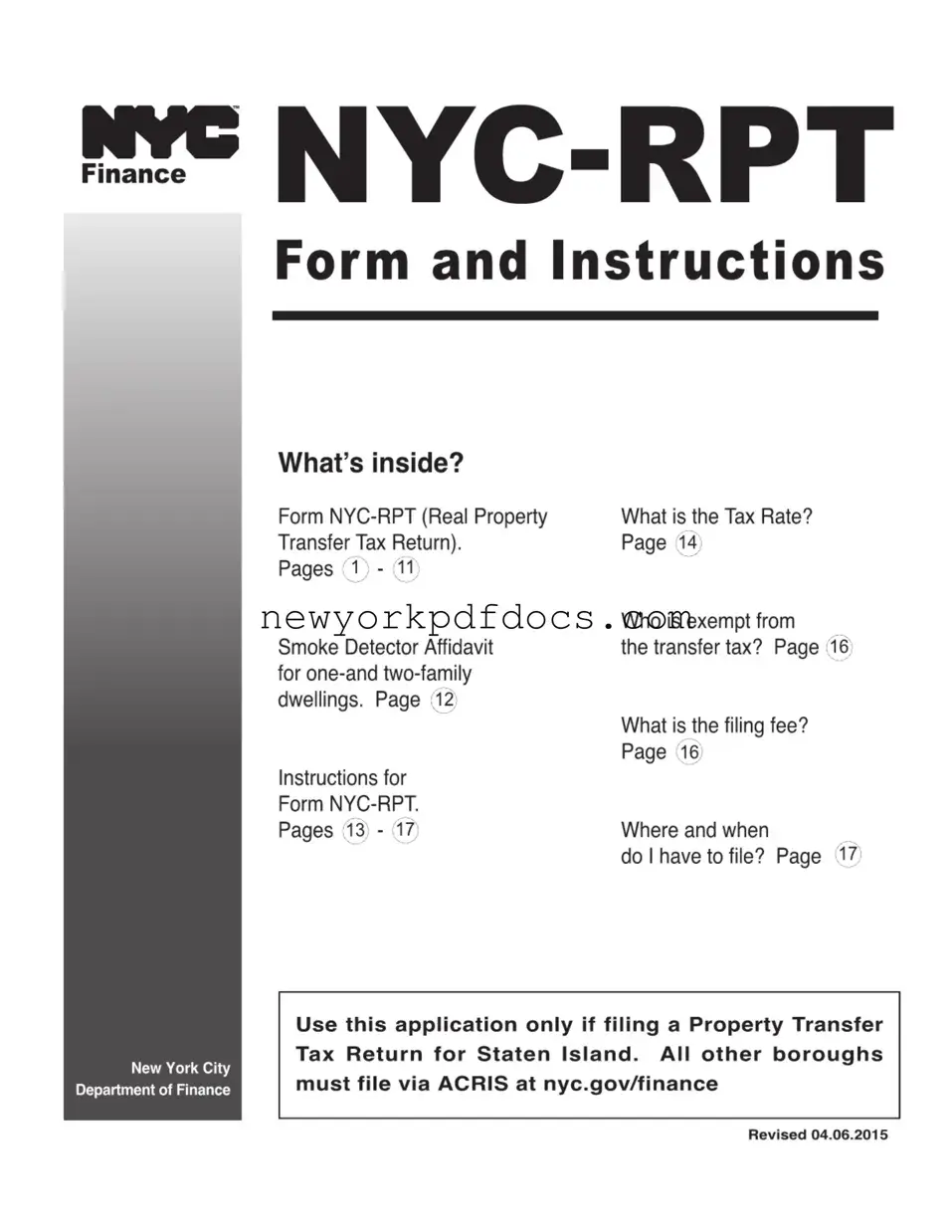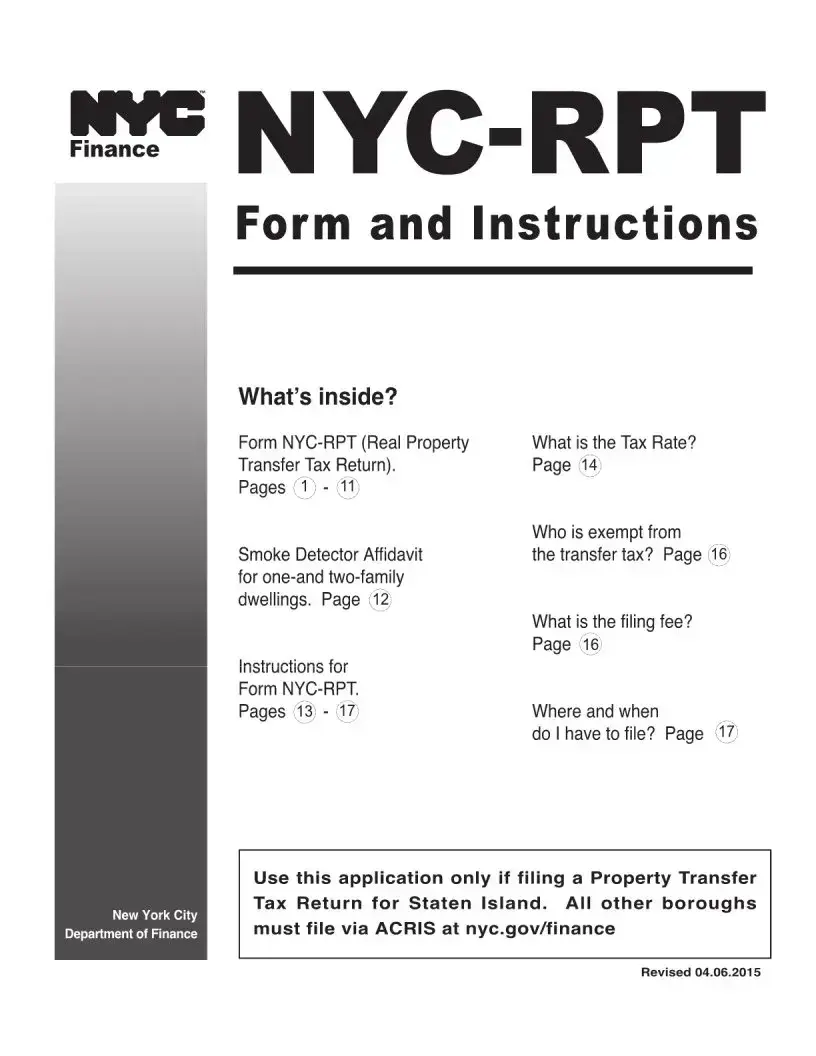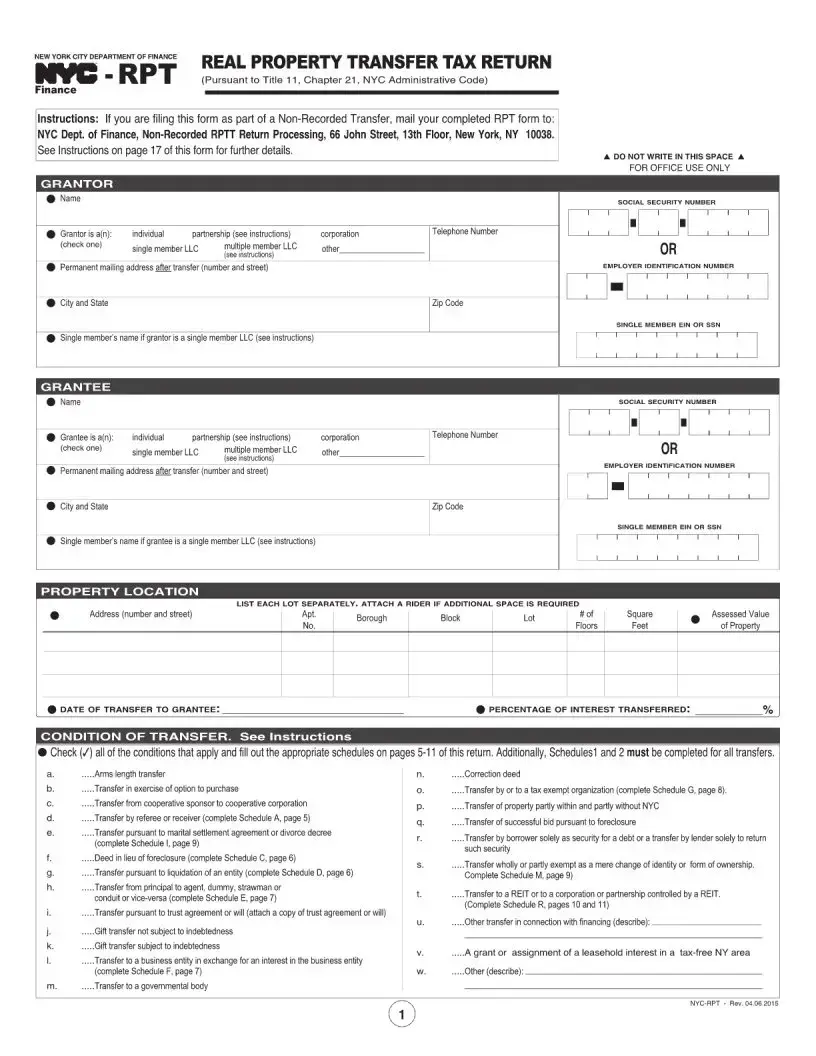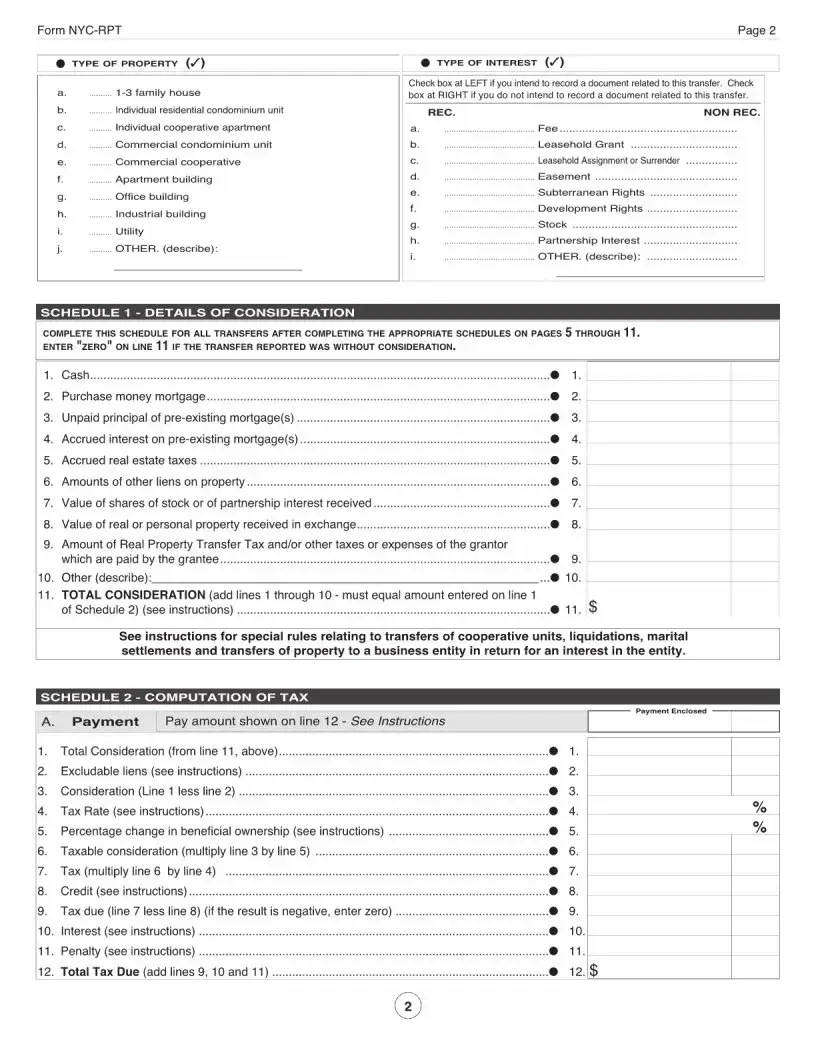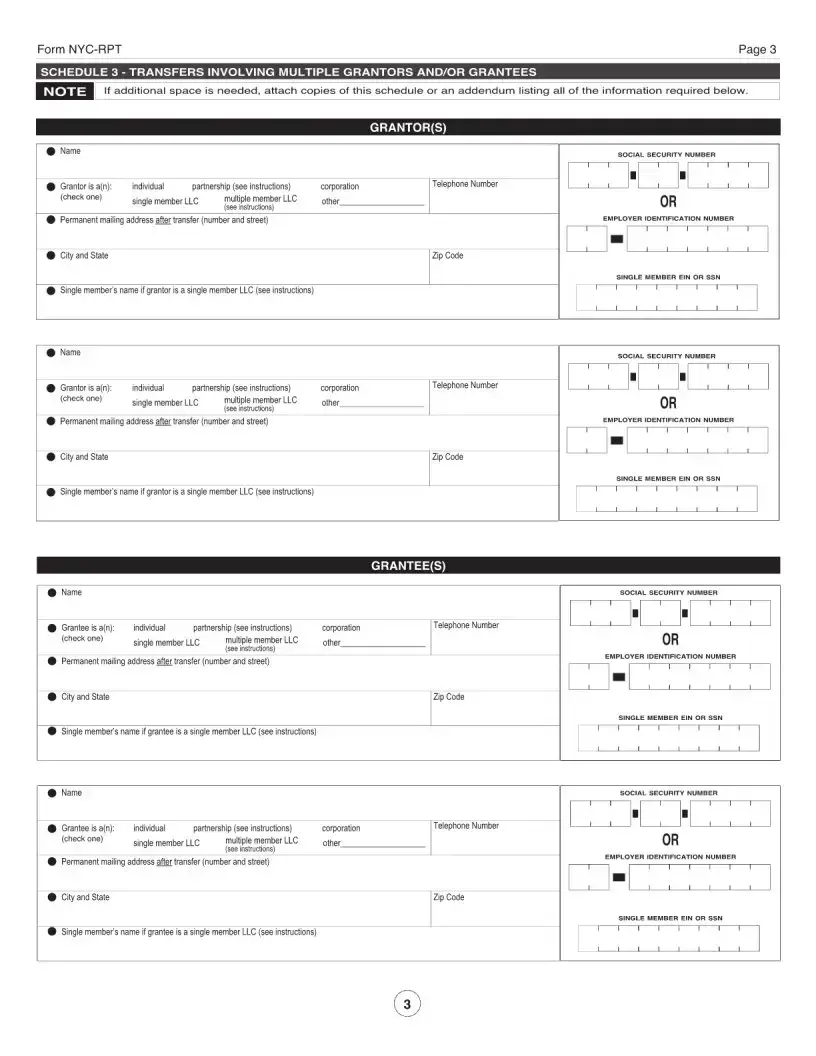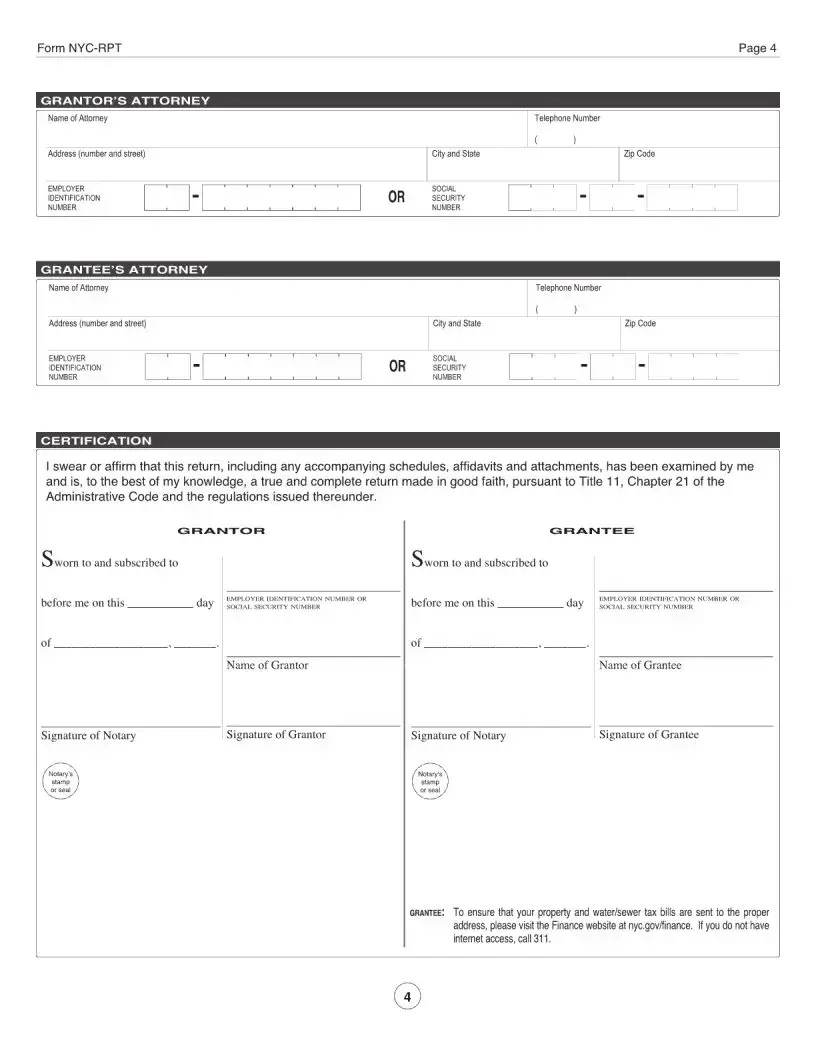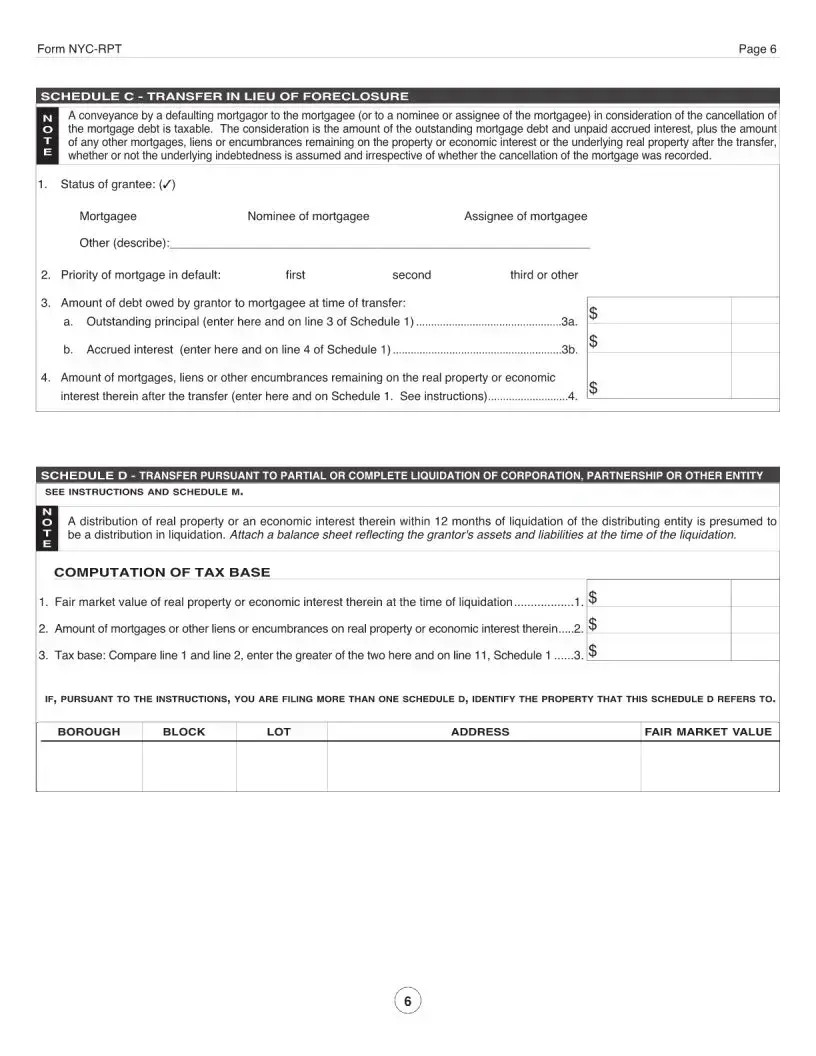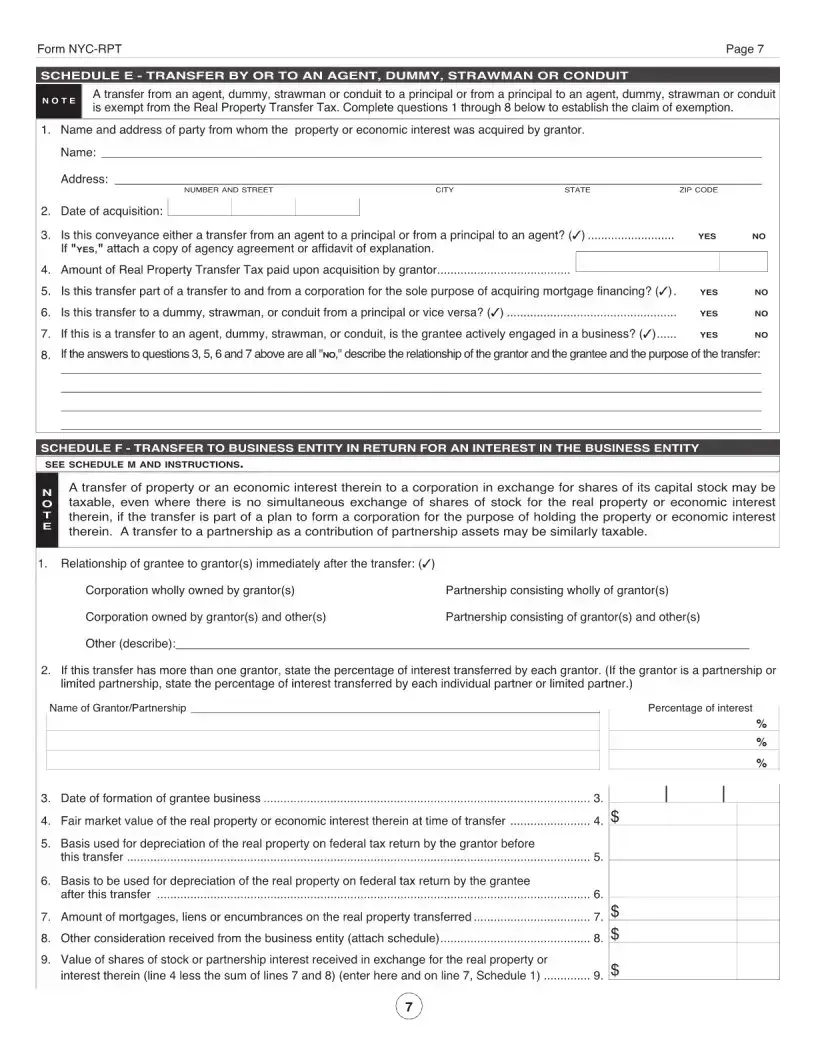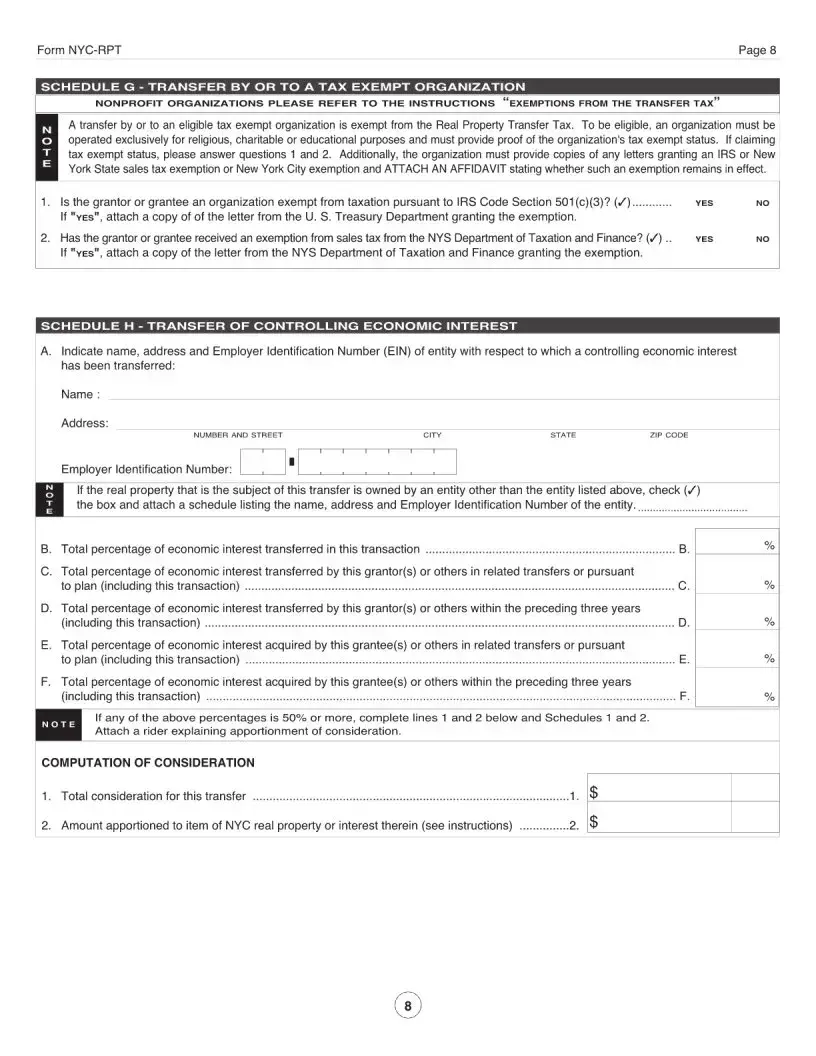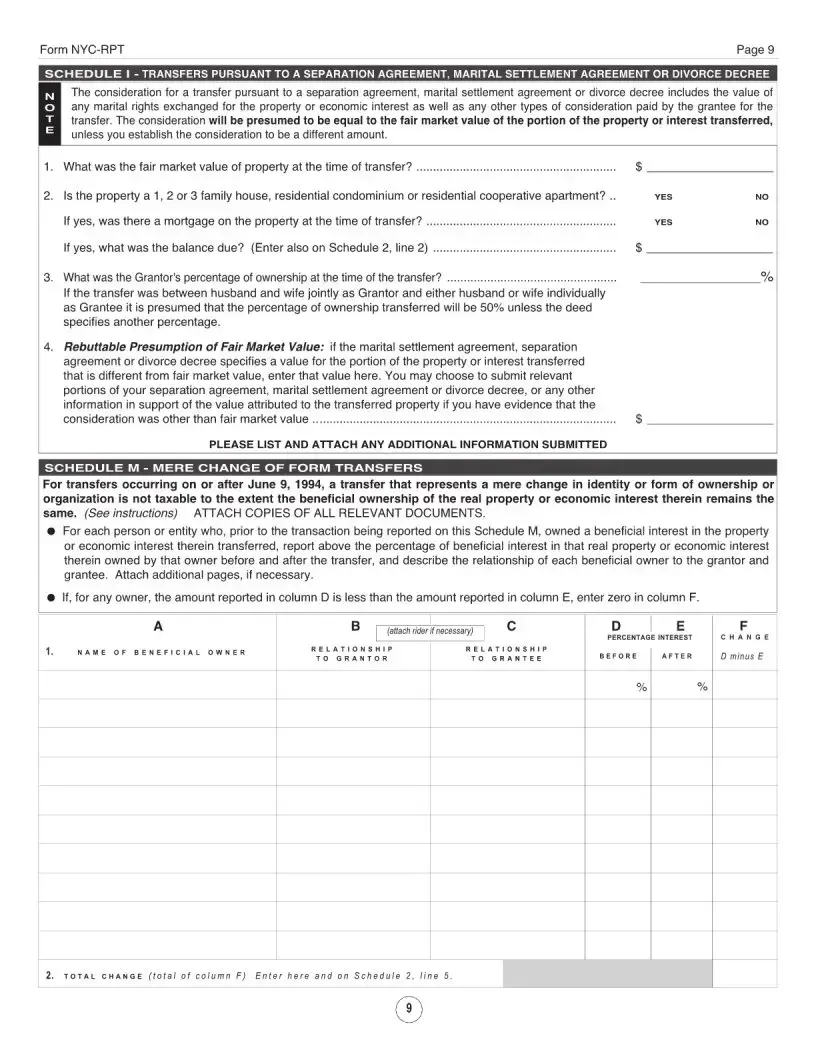The NYC RPT form, officially known as the Real Property Transfer Tax Return, is a critical document for anyone involved in the transfer of real estate in New York City. This form serves multiple purposes, including the declaration of property details, the identification of parties involved in the transaction, and the calculation of applicable taxes. It spans several pages, detailing necessary information such as the grantor and grantee's names, social security numbers, and contact information. Additionally, it includes sections for property location, type of property, and the conditions of the transfer. The form also outlines various exemptions from the transfer tax, as well as the tax rates that apply. It is essential to note that different boroughs have specific filing requirements; for instance, Staten Island has its own submission process, while other boroughs utilize the ACRIS system. Completing the NYC RPT form accurately is vital to ensure compliance with local regulations and to avoid potential penalties. Whether you are a buyer, seller, or attorney involved in a real estate transaction, understanding this form is crucial for a smooth transfer process.
